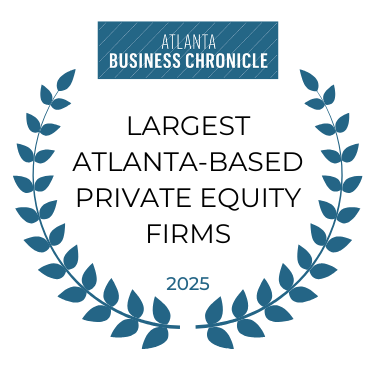Insights
NEW FEATURES BY DATE
List of Services
-
6/6/2025 How to Position Your Brand for Acquisition: A Marketing Playbook for Sellers6/6/2025
-
4/16/2025 Cultivating a Culture of Accountability and Empowerment4/16/2025
-
1/1/2025 Case Study: Preserving Legacy While Driving Growth through Minority Deals1/1/2025
-
5/20/2024 Georgia Oak Associate Job Description5/20/2024
-
3/4/2024 1851 Franchise: "Private Equity and Sports: The MVP Playbook"3/4/2024
-
9/21/2023 (Atlanta Business Chronicle) Atlanta Braves legend joins Georgia Oak Partners9/21/2023
-
2/3/2023 (Atlanta Business Chronicle) Slow, normal growth is the economic outlook for 2023: Atlanta financial experts discuss forecast in recent panel2/3/2023
-
4/11/2022 Can You Raise Prices in This Market? If Not, When?4/11/2022
-
12/18/2021 Putting People First12/18/2021
-
6/30/2021 Staffing Industry Insights6/30/2021
-
3/18/2021 Remote Work: A Permanent Part of Every Industry3/18/2021
-
2/4/2021 A Year of Growth: Focusing on Human Capital in 20212/4/2021
-
8/27/2020 COVID-19 Leadership with Page Siplon, CEO of TeamOne Logistics8/27/2020
-
8/27/2020 Culture Shifts During COVID-19 and Beyond8/27/2020
-
7/23/2020 Miked Up: Organizational Diversity - Volume 2, Part 17/23/2020
-
7/23/2020 Georgia & National Labor Market Trends: A Look at Six Key Industries7/23/2020
-
6/16/2020 Harnessing the Power of Technology6/16/2020
-
6/16/2020 Virtual Communication in Uncertain Times6/16/2020
-
5/27/2020 Miked Up: Volume 1, Part 15/27/2020
-
5/6/2020 Navigating the New Normal5/6/2020
-
5/6/2020 The Front Lines of Business Continuity5/6/2020
-
1/8/2020 Build Successful Teams with These 5 Elements1/8/2020
-
9/10/2019 Recruiting and Maintaining Manufacturing Talent9/10/2019
-
6/5/2019 Minority vs. Majority Deals6/5/2019
-
3/1/2019 Video Case Study: Sailfish Boats3/1/2019
-
11/28/2018 What Is Your Legacy?11/28/2018
-
4/5/2018 Navigating the Sale Process: From LOI to Post-Close4/5/2018
-
10/18/2016 Selling to Your Management Team10/18/2016
-
7/25/2025 Scaling with Intention: Growth Lessons from the Front Lines7/25/2025
How to Position Your Brand for Acquisition: A Marketing Playbook for Sellers
When it comes to selling your business, most owners focus on financials: EBITDA, margins, and revenue trends. But smart buyers are evaluating more than just your P&L. They’re buying your story, your reputation, and your potential.
That’s where brand positioning becomes a quiet—but powerful—multiplier.
At Georgia Oak, we work with business owners throughout the Southeast who are thinking about what’s next. Whether your goal is a full exit or a minority investment, one thing is clear: how your company shows up to the outside world directly impacts buyer perception, deal value, and post-close success.
Before joining Georgia Oak, I founded and ran a digital marketing agency for nearly 15 years, ultimately selling it to a trusted competitor. That experience gave me a front-row seat to the importance of positioning, perception, and storytelling in an acquisition. I’ve lived this process as both a founder and an investor and it shapes how I approach growth and brand strategy in my role at Georgia Oak.
Here’s your marketing playbook to get acquisition-ready.
1. Clarify Your Brand’s Position in the Market
Knowing what makes your company special and being able to articulate that will help buyers understand its full value.
Start by tightening your positioning:
- Niche: What space do you dominate?
- Ideal Customer: Who do you serve best, and why do they choose you?
- Competitive Edge: What makes you meaningfully different?
- One-Liner: Can someone repeat what your company does after hearing it once?
Buyers want focus. The clearer your market position, the more confident they feel about future growth.
2. Polish Your Digital Presence
Your website and public-facing materials are often the first stop for a potential partner. What they see there sets the tone for everything else.
- Website: Is it clear, professional, and aligned with your positioning?
- SEO: Can people find your company when they search for what you do?
- Social Proof: Are you showing testimonials, case studies, or other forms of positive proof?
- Brand Cohesion: Do your visuals and messaging feel consistent across channels?
A strong online presence signals strong internal operations.
3. Showcase Growth Levers
Buyers aren’t just acquiring what you’ve done—they’re investing in what’s next. Marketing is a key part of that future value.
- Lead Generation Engine: Show how you consistently attract new customers.
- Marketing ROI: Share high-level results from past campaigns (even directional data helps).
- Untapped Channels: Point out areas where the next owner could accelerate growth.
- Roadmap: Have a simple plan that shows where the brand could go next.
You don’t need a perfect system—you just need to show there’s a system.
4. Build Trust Through Messaging
Branding isn’t fluff. It’s about trust.
Tell Your Story.
Why did you start the business? Why do customers stick around?
Show Your Team.
Highlight the people behind the product or service.
Share Your Values.
Buyers want to know what kind of company they’re inheriting.
Be Consistent.
Make sure your story holds together across materials, sales decks, and leadership conversations.
Buyers care deeply about cultural fit and continuity. Don’t make them guess.
5. Assemble Your Marketing Diligence Package
Save time and build buyer confidence by prepping these materials in advance:
- A one page brand positioning summary
- Key customer segments and personas
- Marketing metrics or scorecards (even if high-level)
- Campaign snapshots or success stories
- Current marketing calendar or growth roadmap
Think of this as your "brand data room." It tells the buyer: this company is intentional, organized, and ready.
Final Thought: Start Sooner Than You Think
Most of this work can be done long before you’re in the market. In fact, the best time to position your brand for acquisition is 12–18 months before you ever talk to a buyer (or even earlier!).
It’s not about creating a facade. It’s about putting your best foot forward and making the value of your business easy to see.
At Georgia Oak, we help founders grow with intention—whether they’re ready to sell or just want to plan for the future. If you’d like to talk through any of these ideas, I’m happy to help.
At Georgia Oak, we’re committed to enhancing your business and helping founders grow their legacies
to their fullest potential. If you find we’re a good fit for your next step, please reach out to us.



